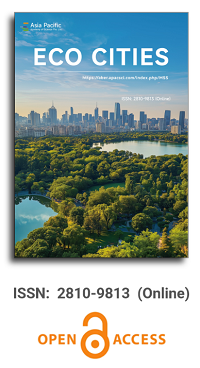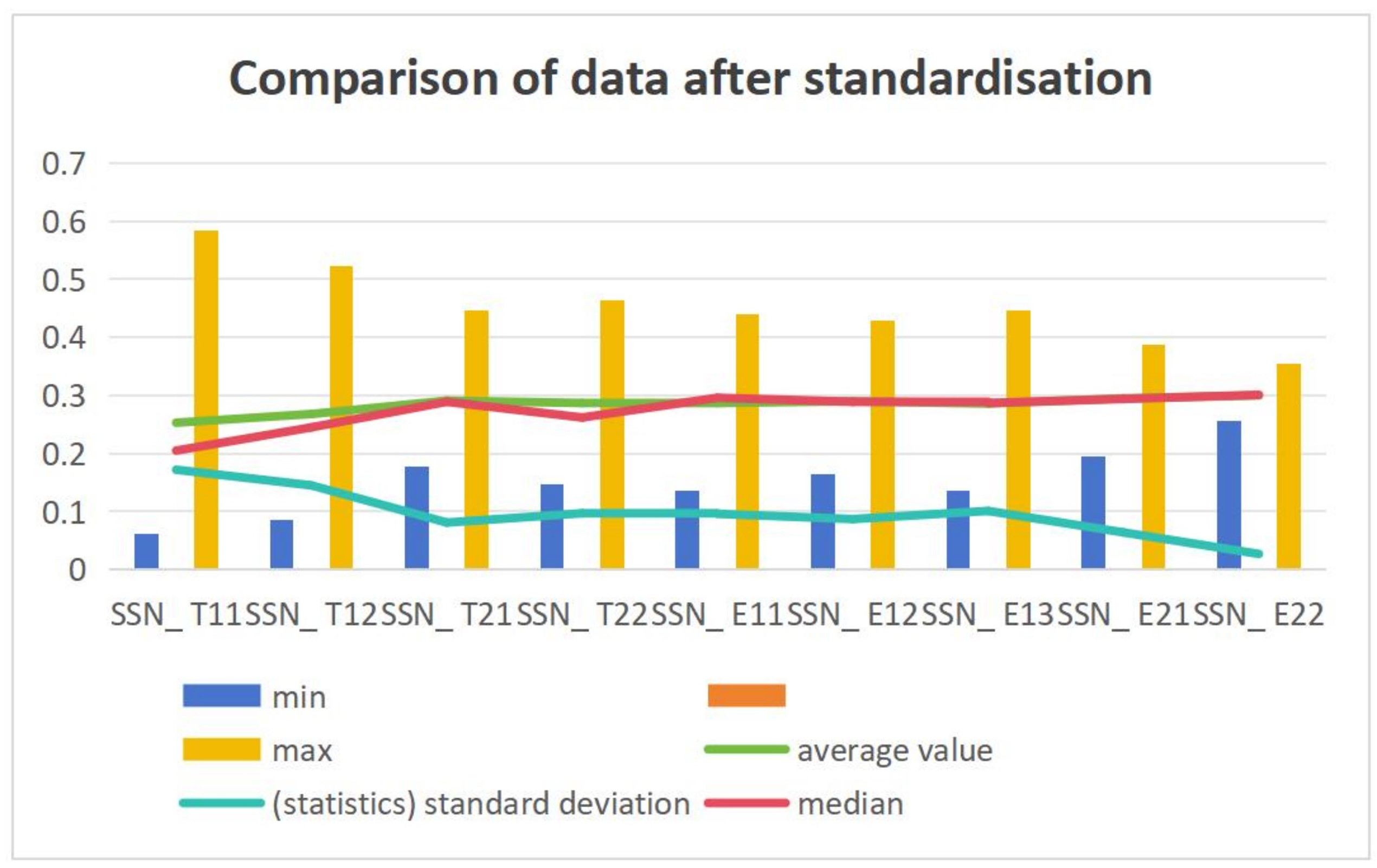


Urban ecology and planning: A necessary convergence
Vol 3, Issue 1, 2022
Download PDF
Abstract
The global, large-scale urbanization of the territory is one of the most important ecological phenomena today. The standards used in urban growth are crucial to the protection of biodiversity and affect the provision of a reasonable quality of life for the urban population. Contrary to the views of many biologists and other scholars, cities are barren environments. Contrary to nature, urban ecology is a necessary interdisciplinary science. Recent developments show that cities are heterotrophic ecosystems that need to be planned in a way to reduce their impact on the biosphere and improve their ability to maintain biodiversity.
Keywords
References
- Dearborn DC, Kark S. Motivation to protect urban biodiversity. Conservation Biology 2010; 24(2): 432–440.
- Angeoletto F. Planeta ciudad: Ecología urbana y planificación de ciudades medias de Brasil (Spanish) [Planet city: Urban ecology and planning of medium-sized Brazilian cities] [PhD thesis]. Spain: Universidad Autónoma de Madrid; 2012.
- Carvalho E. Exclusão social e crescimento das cidades médias brasileiras (Spanish) [Social exclusion and growth of Brazilian medium-sized cities]. Scripta Nova: Revista Electrônica de Geografía y Ciencias Sociales 2003; 6(146).
- Angeoletto F, Santos JWMC, Ruiz Sanz JP, et al. Tipología socio-ambiental de las ciudades medias de Brasil: Aportes para un desarrollo urbano sostenible (Spainsh) [Socio-environmental typology of medium-sized cities in Brazil: Contributions for sustainable urban development.]. Revista Brasileira de Gestão Urbana 2016; 8(20): 272–287.
- McPhearson T, Pickett STA, Grimm NB, et al. Advancing urban ecology toward a science of cities. BioScience 2016; 16: 113–124.
- Dunn RR, Gavin MC, Monica CS, et al. The pigeon paradox: dependence of global conservation on urban nature. Conservation Biology 2006; 20(6): 1814–1816.
- Vianna MMB, da Silva Portugal L, Balassiano R. Intelligent transportation systems and parking management: Implementation potential in a Brazilian city. Cities 2004; 21(2): 137–148.
- Angeoletto F, Moreno M. Tendencias socio-ambientales de ciudades brasileñas (Spanish) [Socio-environmental trends in brazilian cities]. Geografia urbana e temas transversais. Maringá: Editora da Universidade Estadual de Maringá; 2009.
- Camps-Calvet M, Langemeyer J, Calvet-Mir L, et al. Ecosystem services provided by urban gardens in Barcelona, Spain: Insights for policy and planning. Environmental Science & Policy 2016; 62: 14–23.
- Terradas J. Ecología urbana (spanish) [Urban ecology]. Barcelona, Espana: Editorial Rubes; 2001.
- Collins JP, Kinzig A, Grimm NB, et al. A new urban ecology: Modeling human communities as integral parts of ecosystems poses special problems for the development and testing of ecological theory. American scientist 2000; 88(5): 416–425.
- Faeth SH, Bang C, Saari S. Urban biodiversity: Patterns and mechanisms. Annals of the New York Academy of Sciences 2011; 1223(1): 69–81.
- Lambin EF, Meyfroidt P. Global land use change, economic globalization, and the looming land scarcity. Proceedings of the National Academy of Sciences 2011; 108(9): 3465–3472.
- Lubbe CS, Siebert SJ, Cilliers SS. Political legacy of South Africa affects the plant diversity patterns of urban domestic gardens along a socio-economic gradient. Scientific Research and Essays 2010; 5(19): 2900–2910.
- Hand KL, Free C, Seddon PJ, et al. A novel method for fine-scale biodiversity assessment and prediction across diverse urban landscapes reveals social deprivation-related inequalities in private, not public spaces. Landscape and Urban Planning 2016; 151: 33–44.
- Heiden G, Barbieri RL, Tempel Stumpf ER, et al. Considerações sobre o uso de plantas ornamentais nativas (Spanish) [Considerations about the use of native ornamental plants]. Revista Brasileira de Horticultura Ornamental 2006; 12(1): 2–7.
- Galluzzi G, Eyzaguirre P, Negri V. Home gardens: Neglected hotspots of agro-biodiversity and cultural diversity. Biodiversity and Conservation 2010; 19(13): 3635–3654.
- Hostetler M, Allen W, Meurk C. Conserving urban biodiversity? Creating green infrastructure is only the first step. Landscape and Urban Planning 2011; 100(4): 369–371.
- Angeoletto F, Santos JWMC. Los biólogos brasileños no habitan en el planeta ciudad: Por qué es urgente formar ecólogos urbanos (Spanish) [Brazilian biologists do not live on planet city: Why it is urgent to train urban ecologists]. Revista Espaço Acadêmico 2015; 14(165): 74–82.
- Goddard MA, Dougill AJ, Benton TG. Scaling up from gardens: Biodiversity conservation in urban environments. Trends in Ecology and Evolution 2010; 25: 90–98.
- Díaz F, Quetier F, Caceres DM, et al. Linking functional diversity and social strategies in a framework for interdisciplinary analysis of nature’s benefits to society. Proceedings of the National Academy of Sciences 2011; 108(3): 895–902.
- Tzoulas K, Korpela K, Venn S, et al. Promoting ecosystem and human health in urban areas using Green Infrastructure: A literature review. Landscape and Urban Planning 2007; 81: 167–178.
- Aleixo B, Rezende S, Pena JL, et al. Human right in perspective: Inequalities in access to water in a rural community of the Brazilian Northeast. Ambiente & Sociedade 2016; 19(1): 63–84.
- Angeoletto F, Santos JWMC, Sanz JPR. ¿Hay flores en el jardín? La vegetación cultivada en patios urbanos a través de un gradiente social (Spanish) [Are there flowers in the garden? Vegetation grown in urban yards across a social gradient]. Paisagem e Ambiente 2015; (35): 119–135.
- Duarte MBDCP, dos Santos MFP, de Melo Falcão NA, et al. O trabalho decampo na recuperação da mata ciliar do Riacho Gulandim (Portuguese) [Fieldwork in the recuperation of the riparian forest of Riacho Gulandim]. Anais do I Colóquio Internacional de Educação Geográfica edo IV Seminário Ensinar Geografia na Contemporaneidade 2018; 1(1): 345–356.
- Beltrame TF, Beltrame A. Um relato de recuperação de uma área: Conscientização por meio da educação ambiental (Portuguese) [An area reclamation report: Awareness through environmental education]. Revista Ciência em Extensão 2018; 14(1): 141–153.
- UNFPA. Estado de la población mundial 2007 (Spanish) [State of World Population 2007]. New York, USA: United Nations Population Fund; 2007.
- Tzoulas K, James P. Making biodiversity measures accessible to nonspecialists: An innovative method for rapid assessment of urban biodiversity. Urban Ecosystems 2010; 13: 113–127.
- PNUMA (Programa de las Naciones Unidas para el Medio Ambiente). Anuario PNUMA—Temas Emergentes en nuestro medio ambiente global (Spanish) [UNEP year book—Emerging issues in our global environment global environment]. Nairobi, Kenya: PNUMA; 2011.
- Secretariat of the Convention on Biological Diversity. Cities and biodiversity outlook. Montreal: SCBD; 2012. p. 64.
Supporting Agencies
Copyright (c) 2022 Fabio Angeoletto, Mark D.E. Fellowes, Liliana Essi, Jeater W.M.C. Santos, Juciane M. Johann, Deleon da Silva Leandro, Nathalia Moraes Mendonça
License URL: https://creativecommons.org/licenses/by/4.0

This site is licensed under a Creative Commons Attribution 4.0 International License (CC BY 4.0).

Chinese Academy of Sciences, China
Indexing & Archiving
Asia Pacific Academy of Science Pte. Ltd. (APACSCI) specializes in international journal publishing. APACSCI adopts the open access publishing model and provides an important communication bridge for academic groups whose interest fields include engineering, technology, medicine, computer, mathematics, agriculture and forestry, and environment.



.jpg)

.jpg)



